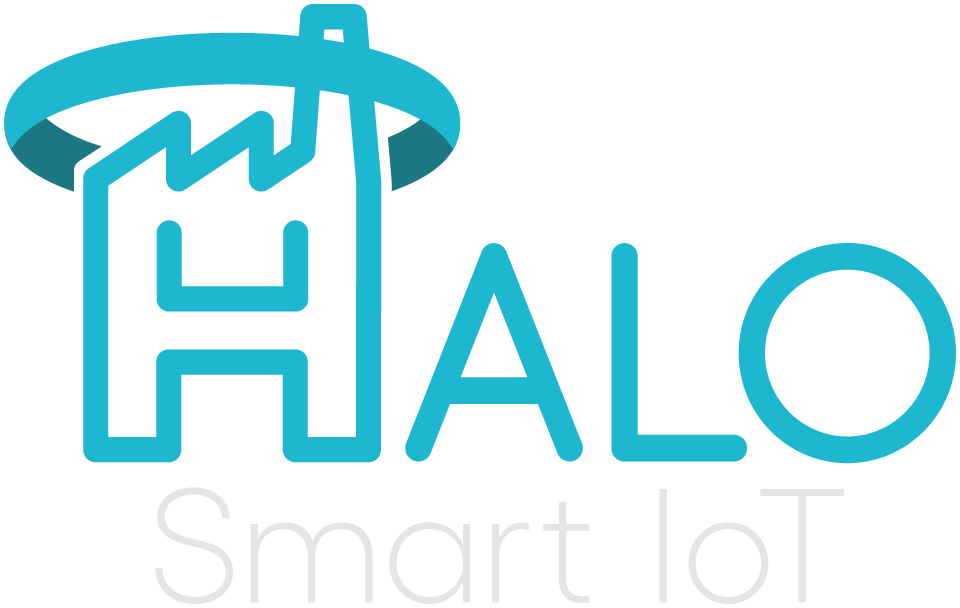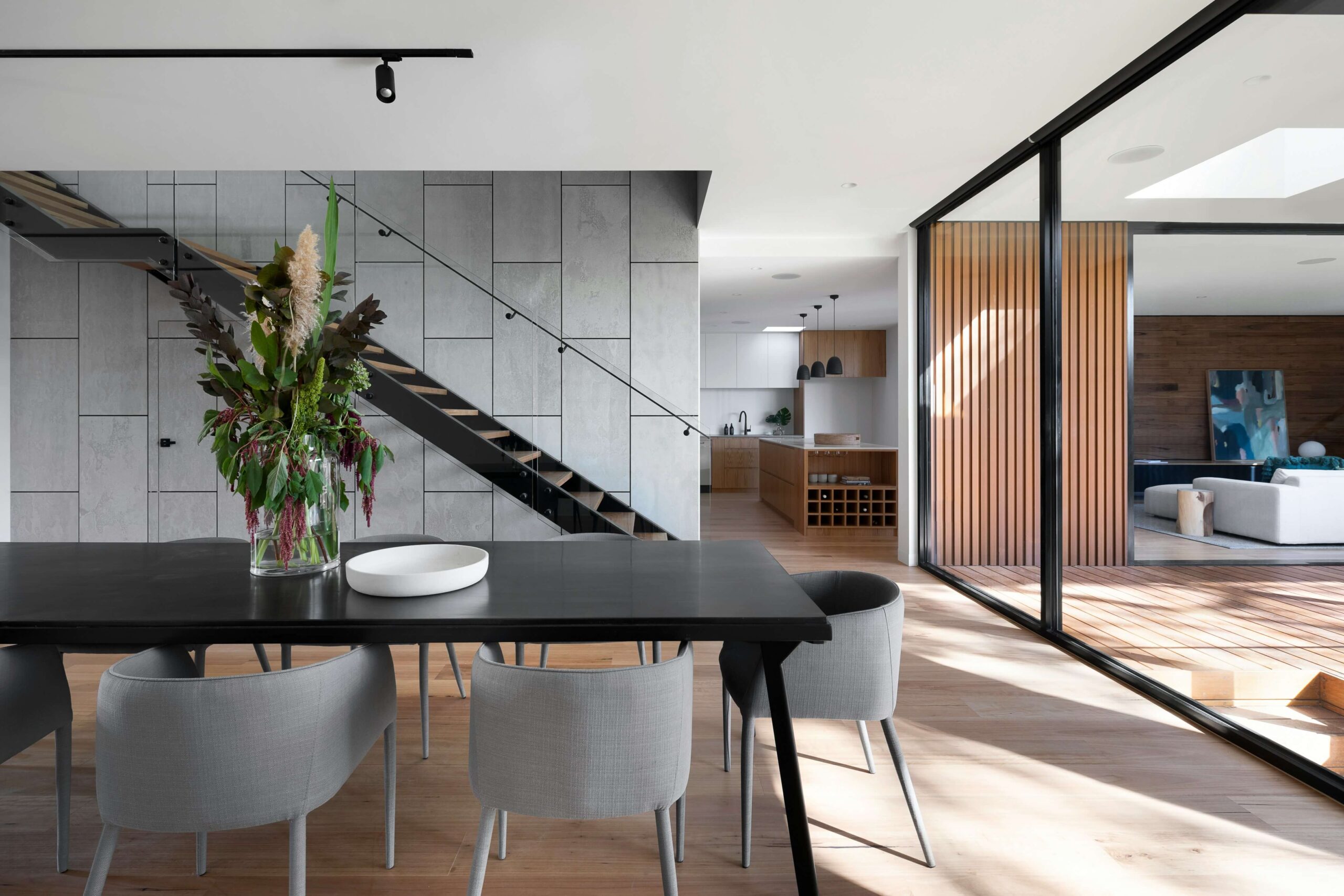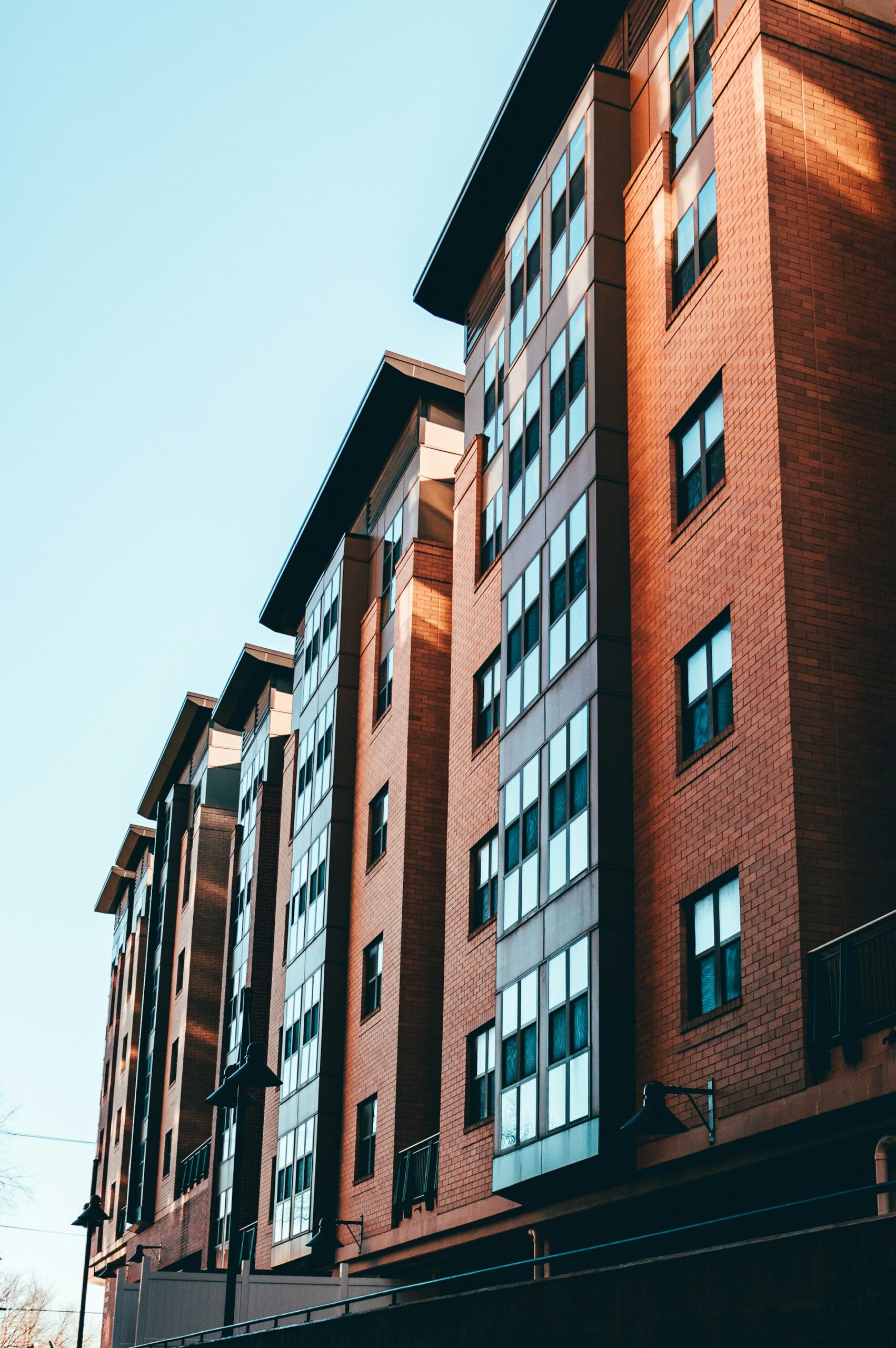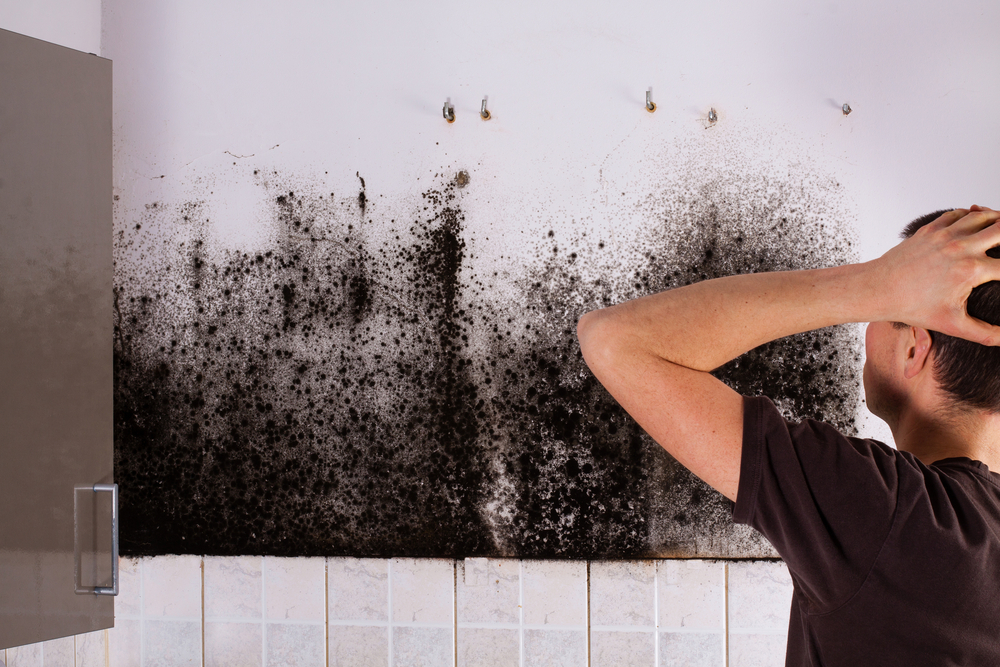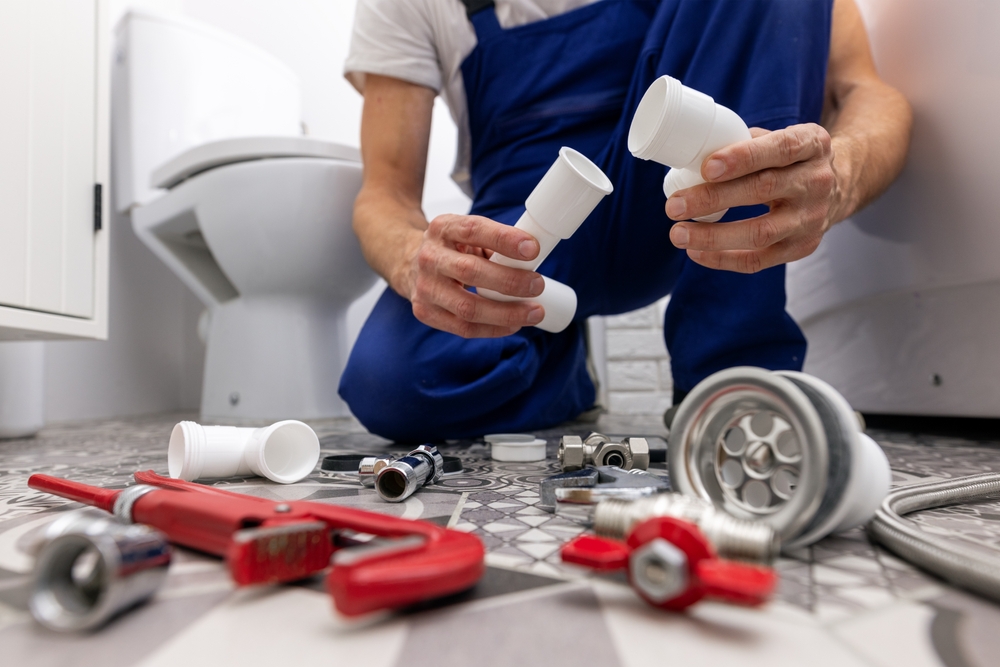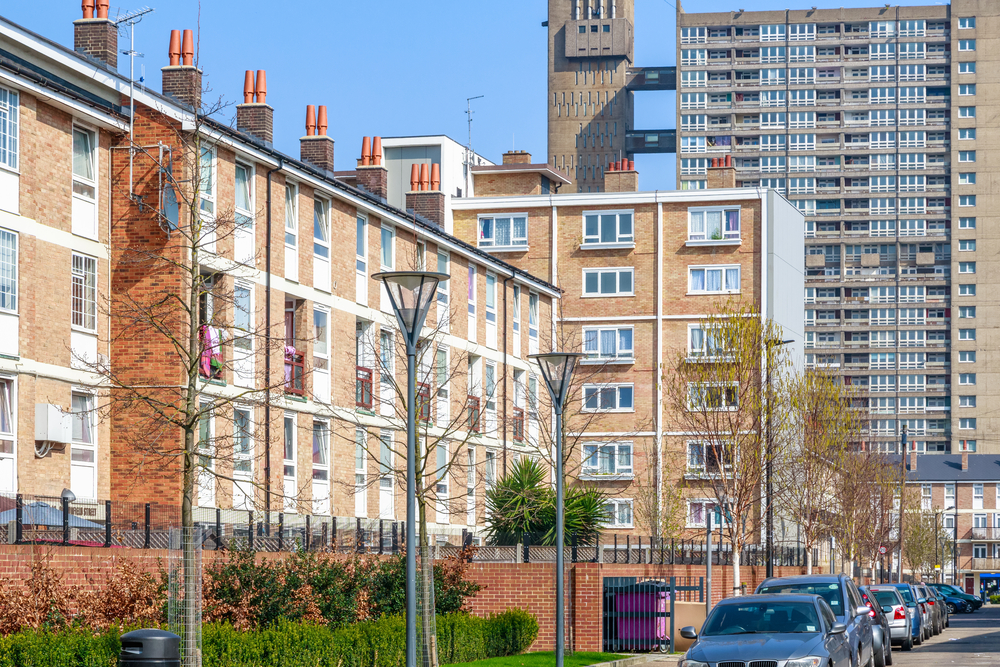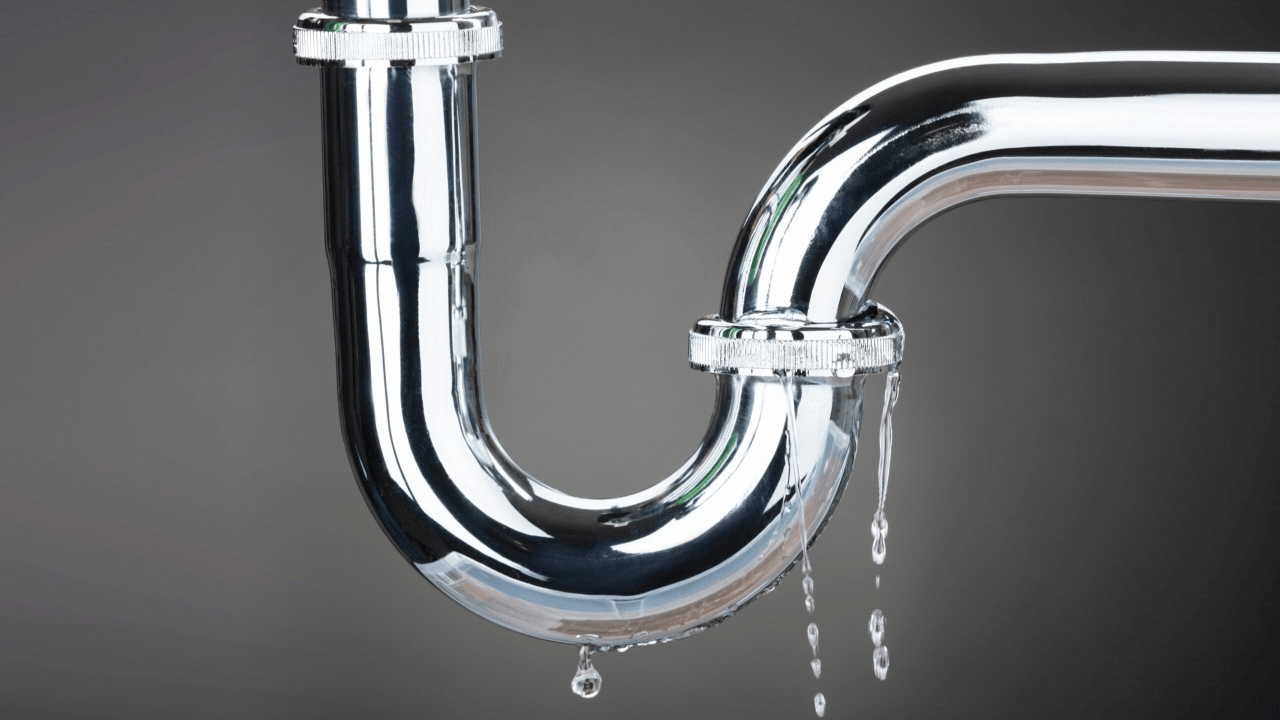Leak detection is essential. Did you know that water damage claims in the UK typically range between £1,000 and £5,000 per incident? Even a small, undetected leak can quickly turn into a major household issue—causing structural damage, mould growth, and major disruption to everyday life. Much like a single dripping tap can fill a bathtub overnight, ignoring early warning signs can lead to costly and emotionally draining consequences. Introducing the Halo Smart IoT Sensor The Halo Smart IoT devices are designed to protect your home through early leak and flood detection. Unlike traditional water alarms that only activate once wet, this multi-functional sensor offers intelligent, proactive protection—while respecting your privacy. Advanced Water Leak Detection You Can Trust The Halo Smart IoT Sensor continuously monitors your home for signs of water leaks, sending real-time alerts directly to your smartphone when issues are detected. This immediate notification system allows you to act quickly—whether you’re asleep, at work, or away on holiday—helping to prevent extensive damage before it begins. Whole-Home Coverage Made Simple Water leaks can happen anywhere: under sinks, behind appliances, or in hidden corners of the home. The Halo Smart IoT’s expandable sensor network ensures no vulnerable area is left unprotected: With battery-powered sensors, installation is quick and wire-free—even in hard-to-reach areas where traditional systems fall short. Beyond Leaks: A Complete Smart Monitoring Solution The Halo Smart IoT Sensor goes further than just detecting water. It also monitors: By detecting rising humidity or hidden issues within walls, helps prevent mould growth and long-term structural damage—creating a healthier, safer living space. Cost Savings for UK Homeowners Installing the Halo Smart IoT Sensor can deliver meaningful financial benefits: Smart Home Integration, Seamlessly Delivered The Halo Smart IoT Sensor integrates smoothly with your existing smart home setup. It can also connect to HVAC systems to optimise airflow in moisture-prone spaces, further reducing the risk of damp and mould. This compatibility ensures that you’re enhancing your current smart home investment—not replacing it. Protect Your Property Today Water damage is one of the most common—and costly—home insurance claims in the UK. The Halo Smart IoT Sensor offers a proactive, connected solution that detects problems at the earliest possible stage, giving you peace of mind and protecting your most valuable asset. Don’t wait for a leak to cause chaos. Protect your home with Halo today—before a drip becomes a disaster.
Finding Meaning in Data: How AI and Analytics Can Transform Social Housing
Data analytics is emerging as a powerful tool to enhance tenant well-being and optimise property management. A recent discussion with a key decision-maker in the sector shed light on how data-driven insights can help predict and mitigate housing issues, such as damp and energy inefficiencies, while also addressing the need for proactive system maintenance. The Challenges: Understanding the Market One of the initial challenges discussed was the use of radon sensors in social housing. Despite the potential benefits, councils in Wales have stated that they will not accept data from digital devices, preferring more traditional mechanical methods. This highlights an ongoing issue in the industry: the slow adoption of digital solutions in certain regions due to regulatory restrictions. The Real Opportunity: Data Analytics in Housing A key takeaway from the discussion was the potential to use existing property data to drive meaningful change. By leveraging analytics, we can better understand tenant behaviours, property conditions, and environmental factors. By overlaying property data with additional contextual information—such as whether tenants receive benefits, are elderly, or live in single-occupancy homes—we can begin to identify patterns and trends. For instance, are certain types of tenants more prone to experiencing damp issues? Are there correlations between energy inefficiencies and specific demographics? By answering these questions, housing providers can make more informed decisions that improve living conditions and resource allocation. The Power of AI and Customer-Led Innovation The prospect of integrating AI to extract deeper insights is becoming increasingly tangible. This aligns with broader industry trends where organisations are shifting towards smart, data-led decision-making. If we can successfully implement AI analytics with a real housing association, the initiative would not only offer valuable insights for property management but also serve as a powerful case study to be shared with Welsh government authorities. This kind of thought leadership positions us at the forefront of innovation within the sector. The Future: Building a More Proactive Ecosystem The conversation underscored the importance of bridging the gap between technology deployment and ongoing customer support. It’s not enough to simply install monitoring solutions—we need to ensure they are maintained, understood, and used effectively by housing providers. This means establishing clearer naming conventions, simplifying configurations, and educating customers on system management. Moreover, our analytics platform must strike a balance between real-time alerts and long-term data trends to provide both immediate and strategic insights. Conclusion: A Data-Driven Path Forward As we move forward, our focus is on turning data into actionable insights—helping housing providers create healthier, more efficient living environments while strengthening our position in the market. The journey has just begun, but the possibilities are vast, and the potential impact is transformative.
Ensuring Mould-Free Residential Buildings: A Vital Step for Tenant Protection and Comfort
Mould growth in residential buildings is a significant concern for landlords, housing providers, and tenants alike. Left unchecked, it can lead to serious health risks, costly property damage, and legal challenges for landlords. With growing awareness of indoor air quality and tenant well-being, it has become essential for property managers to adopt proactive solutions to prevent mould formation. This is where Halo Smart IoT comes in. By leveraging real-time monitoring and smart technology, landlords and housing providers can maintain mould-free, safe, and comfortable homes while ensuring compliance with housing regulations. The Impact of Mould in Residential Buildings Mould is more than just an aesthetic issue—it poses significant health and financial risks. Health Risks to Tenants Exposure to mould can trigger respiratory issues, allergies, and long-term health problems, particularly for: The presence of mould often correlates with high humidity and poor ventilation, creating an unhealthy living environment. If left untreated, tenants may experience chronic coughing, skin irritation, nasal congestion, and other respiratory symptoms. Property Damage and Costly Repairs Mould can weaken walls, ceilings, and floors, leading to structural damage and expensive repairs. The longer it goes unnoticed, the more extensive (and costly) the damage becomes. A minor condensation issue can quickly escalate into: Beyond repair costs, properties with a mould problem become difficult to let, resulting in lost rental income and dissatisfied tenants. Legal and Compliance Challenges With increasing regulations around housing standards, landlords and housing providers must ensure safe, habitable conditions for tenants. Under the Homes (Fitness for Human Habitation) Act 2018, landlords are legally obligated to maintain properties free from hazards, including excessive damp and mould. Failure to do so can result in legal disputes, fines, and reputational damage. Proactively Preventing Mould with Halo Smart IoT Traditional mould prevention methods—such as periodic inspections—are often reactive and ineffective. By the time visible signs of mould appear, the damage is already done. With Halo Smart IoT, landlords can implement a proactive, technology-driven approach to keeping buildings mould-free. 1. Real-Time Humidity and Temperature Monitoring Mould thrives in humid, poorly ventilated conditions. With Halo Smart IoT humidity and temperature sensors, property managers can monitor conditions in real time and receive alerts if humidity levels exceed safe thresholds. By continuously tracking these factors, landlords can take corrective action before mould develops. 2. Identifying High-Risk Areas Not all rooms are equally vulnerable to mould. Bathrooms, kitchens, and poorly insulated areas are particularly susceptible. Halo Smart IoT sensors can be placed in high-risk areas to detect early signs of excessive moisture, helping property managers focus their efforts where it matters most. 3. Smart Ventilation Control Good ventilation is crucial in mould prevention. With IoT-powered ventilation control, property managers can: This reduces the likelihood of moisture build-up, keeping properties dry and mould-free. 4. Preventing Structural Damage High humidity levels don’t just lead to mould—they also contribute to damp and rot in walls and flooring. By integrating IoT monitoring with predictive maintenance, property managers can detect potential issues early and schedule preventive maintenance before structural damage occurs. 5. Ensuring Compliance with Housing Regulations By actively monitoring indoor conditions, landlords can demonstrate compliance with housing health and safety standards. The Halo Smart IoT system provides data logs and reports that serve as proof of compliance, reducing legal risks and protecting landlords from potential disputes. Cost Savings for Landlords and Housing Providers Reducing Repair Costs Preventing mould with IoT monitoring is significantly cheaper than carrying out major repairs once damage has occurred. Addressing a minor condensation issue early can prevent thousands of pounds in structural repair costs. Lowering Energy Bills Mould often forms in cold, damp properties with poor insulation. By monitoring temperature variations and energy efficiency, property managers can identify inefficiencies in heating and insulation, helping to lower energy costs for both landlords and tenants. Minimising Tenant Complaints and Turnover A mould-free property leads to happier tenants and longer lease agreements. Dissatisfied tenants facing recurring damp issues are more likely to seek alternative accommodation, leading to costly vacancies and re-letting fees. Halo Smart IoT helps create a comfortable, healthy living environment, improving tenant retention. Future-Proofing Residential Buildings with Smart IoT As the housing sector shifts towards smarter, more sustainable property management, Halo Smart IoT offers a cutting-edge solution to mould prevention. By leveraging real-time data, predictive analytics, and smart automation, landlords and housing providers can ensure safer, healthier homes while reducing maintenance costs. For housing providers looking to adopt IoT-powered mould prevention, our team at Halo Smart IoT is ready to assist. Contact us today to discover how our technology can help you protect your properties, reduce costs, and enhance tenant well-being.
Cost Savings with Predictive Maintenance in Residential Tenanted Properties
Managing residential tenanted properties can be a complex and costly task, particularly when it comes to maintenance and repairs. Traditional reactive maintenance—where landlords and property managers only address issues once they become critical—can lead to unexpected expenses, tenant dissatisfaction, and prolonged property damage. However, with the advent of predictive maintenance powered by Halo Smart IoT, landlords and housing providers can save costs, improve efficiency, and enhance tenant satisfaction by identifying and addressing issues before they escalate. What is Predictive Maintenance? Predictive maintenance leverages real-time monitoring and data analytics to foresee potential issues in a property’s infrastructure, enabling landlords to take preventive action before problems worsen. By integrating smart sensors and IoT technology, predictive maintenance can monitor critical aspects of a property, such as: Instead of relying on routine inspections or waiting for tenants to report faults, predictive maintenance uses real-time data from Halo Smart IoT devices to provide insights into a property’s condition, allowing landlords and housing providers to reduce costly emergency repairs and optimise maintenance schedules. How Predictive Maintenance Reduces Costs 1. Preventing Expensive Repairs Reactive maintenance often results in costly emergency call-outs and major repairs. For example, a boiler failure in winter can lead to urgent repair costs and tenant complaints. However, with Halo Smart IoT’s predictive monitoring, landlords can detect early warning signs—such as fluctuating temperatures or inefficiencies in heating systems—allowing for planned maintenance at a lower cost before total failure occurs. Similarly, damp and mold issues, which often arise due to poor ventilation and excess humidity, can be prevented with IoT monitoring. Humidity and CO2 sensors can alert property managers to poor ventilation conditions, enabling timely interventions such as adjusting airflow, repairing insulation, or installing dehumidifiers before structural damage and health risks emerge. 2. Reducing Tenant Turnover and Complaints Property management costs aren’t just about repairs—tenant dissatisfaction due to poor maintenance can lead to higher tenant turnover, resulting in additional costs for marketing, vacant property losses, and re-letting fees. By using predictive maintenance, landlords can ensure properties remain in optimal condition, keeping tenants happy and reducing costly vacancies. For example, heating system inefficiencies are a frequent source of complaints during colder months. With Halo Smart IoT, landlords receive alerts on temperature fluctuations, ensuring that heating issues are addressed before they impact tenant comfort. Proactive maintenance builds trust between landlords and tenants, encouraging longer tenancies and reducing turnover costs. 3. Lowering Energy Bills and Operational Costs Energy efficiency is a major concern for both landlords and tenants. A property with inefficient insulation, faulty heating, or high energy wastage leads to higher energy bills, creating financial strain for both tenants and housing providers. By integrating smart energy monitoring with Halo Smart IoT, property managers can track energy consumption in real-time and identify areas of waste. For instance, if an IoT sensor detects excessive energy use in a vacant property, this could indicate faulty equipment or unnecessary heating usage. These insights enable landlords to make data-driven decisions to optimise energy efficiency, such as: This not only leads to cost savings for landlords but also supports tenants in reducing their energy bills, contributing to improved affordability and tenant satisfaction. 4. Extending Asset Lifespan Predictive maintenance isn’t just about preventing breakdowns—it’s also about prolonging the lifespan of property assets such as boilers, radiators, and ventilation systems. Regular monitoring of temperature fluctuations, water pressure, and energy usage allows property managers to schedule maintenance at optimal intervals, preventing wear and tear and extending the useful life of key property assets. For instance, a boiler that runs inefficiently due to high limescale buildup will consume more energy and eventually fail prematurely. IoT sensors can track performance trends and alert landlords to the need for routine servicing before major issues arise. By keeping appliances and systems well-maintained, landlords avoid premature replacements and save thousands of pounds in capital expenditures. Halo Smart IoT: The Future of Cost-Effective Property Management The Halo Smart IoT system provides a complete solution for property managers looking to reduce maintenance costs while ensuring safe, energy-efficient homes for tenants. By leveraging real-time data and advanced analytics, the system empowers landlords to prevent costly repairs, optimise energy usage, reduce tenant complaints, and extend the lifespan of property assets. By transitioning from reactive maintenance to predictive maintenance, landlords and housing providers can achieve significant cost savings while improving the overall quality of housing stock. The future of residential property management is smart, data-driven, and proactive—and Halo Smart IoT is leading the way. For landlords and housing providers looking to cut maintenance costs and improve efficiency, our team at Halo Smart IoT is ready to assist. Contact us today to learn how smart technology can transform your property management strategy and save you thousands in unnecessary expenses.
The Role of IoT in Estate Management: A Smart Approach
Estate management has traditionally been a labour-intensive process, requiring continuous monitoring, maintenance, and administrative oversight. However, the rise of the Internet of Things (IoT) is transforming the way estates are managed, offering enhanced efficiency, cost savings, and improved tenant experiences. Understanding IoT in Estate Management IoT refers to a network of interconnected devices and sensors that collect and transmit data in real time. In estate management, these technologies provide valuable insights into property conditions, energy usage, and maintenance needs, allowing estate managers to make data-driven decisions that enhance efficiency and sustainability. Key Applications of IoT in Estate Management 1. Smart Building Monitoring IoT-enabled sensors continuously track vital building metrics such as temperature, humidity, lighting, and energy consumption. By integrating these insights into a centralised platform, estate managers can proactively address maintenance issues, optimise energy usage, and ensure tenant comfort. 2. Predictive Maintenance and Cost Reduction Traditional maintenance strategies often rely on scheduled inspections or reactive responses to breakdowns. IoT-driven predictive maintenance, however, uses sensor data to detect early signs of wear and tear, allowing for timely repairs before failures occur. This reduces downtime, minimises repair costs, and extends the lifespan of building assets. 3. Enhanced Security and Safety Smart security systems, including IoT-enabled cameras, access control, and motion sensors, enhance estate security by providing real-time surveillance and automated alerts. Additionally, IoT can improve fire safety by monitoring smoke and carbon monoxide levels, ensuring rapid response in emergencies. 4. Data-Driven Decision Making With IoT, estate managers can access detailed analytics on building performance, energy consumption, and tenant behaviour. This data-driven approach allows for more informed decision-making, enabling better resource allocation and operational efficiencies. The Future of Smart Estates As IoT technology continues to evolve, estate management will become more automated, efficient, and sustainable. The integration of artificial intelligence, machine learning, and blockchain technology will further enhance decision-making, security, and operational transparency. Embracing IoT-driven estate management solutions now will enable property owners and managers to future-proof their estates, enhance tenant satisfaction, and achieve significant cost savings. In an era where efficiency and sustainability are paramount, IoT is the key to smarter estate management.
Fuel Poverty in the UK: A Growing Crisis for Vulnerable Populations
Fuel poverty in the UK is a persistent and growing issue that affects millions of households, particularly the elderly, low-income families, and individuals with health conditions. As energy prices rise and winter temperatures drop, many vulnerable groups face impossible choices between keeping warm and affording basic necessities. This crisis is not just a statistic; it is a painful reality for those struggling to make ends meet, especially among the elderly. Fuel poverty is defined as when a household’s energy costs are above average and, as a result, the residents are unable to afford a warm home. According to recent figures, approximately 3.2 million households in the UK are in fuel poverty, with many experiencing dire consequences as they try to survive winter months without the necessary heating and insulation. This issue is compounded by the high costs of energy, poor housing conditions, and the fact that many elderly people live on fixed incomes. Elderly People at the Heart of the Crisis Elderly individuals are one of the most vulnerable groups affected by fuel poverty in the UK. With increasing age, many elderly people experience greater difficulty in maintaining warmth, and the rising cost of heating adds additional strain to their limited financial resources. A particular area of concern is the impact on their health. Cold homes can lead to severe health problems, including respiratory issues, cardiovascular strain, and even hypothermia. One of the most heart-wrenching examples comes from the tragic case of 88-year-old Margaret, a pensioner from Liverpool, who in 2021 became the face of the fuel poverty crisis in the UK. Margaret was found dead in her freezing home, reportedly unable to afford the heating during the winter months. Like many others, Margaret had to choose between heating and food, a decision that ultimately led to her untimely death. Her story highlights the devastating consequences of fuel poverty for elderly people, who often live on fixed pensions and cannot afford to keep their homes adequately heated. Similarly, Brian Thomas, a 79-year-old man from Nottingham, was featured in news reports last winter when he described his struggles with fuel poverty. Despite suffering from chronic health conditions, including arthritis and diabetes, Brian was forced to turn off his heating to keep costs down. Brian, who lives alone, explained that the rising cost of gas and electricity made it impossible to keep his home warm, even though he knew how vital it was for his health. “I know I’m putting myself at risk,” he said, “but there’s just no choice.” Brian’s situation is not unique, and it’s a stark example of the kind of daily struggle faced by many elderly people in the UK. The Health Impact of Cold Homes The health impacts of fuel poverty are alarming. Cold homes increase the risk of illnesses such as bronchitis, pneumonia, and heart attacks, especially in older adults. According to the National Institute for Health and Care Excellence (NICE), cold weather can increase the likelihood of an individual dying from a heart attack by up to 30%, and the risk of respiratory illness is also significantly elevated. Elderly people, who may already suffer from a weakened immune system or pre-existing medical conditions, are particularly susceptible to the health dangers posed by cold homes. A report by Age UK in 2022 revealed that around 1 in 4 older people in the UK live in homes that are difficult to heat, which contributes to approximately 24,000 winter deaths among the elderly each year. Government Response and Charitable Efforts While the issue of fuel poverty continues to grow, several efforts are being made to address it. The UK government has introduced schemes such as the Winter Fuel Payment, which offers support to pensioners to help cover the cost of heating during the winter. However, these measures have been criticized for not going far enough to address the scale of the crisis. Charitable organisations such as Age UK and National Energy Action (NEA) have been at the forefront of tackling fuel poverty, offering support to those affected through various initiatives. These charities not only provide financial assistance but also raise awareness about the need for better insulation in homes, the importance of switching to energy-efficient appliances, and the need for additional government intervention to protect vulnerable people from the worst effects of rising energy costs. The Need for a Long-Term Solution Fuel poverty is a complex issue that requires more than just short-term measures. For long-term solutions, the UK needs to address the root causes of the crisis, such as the high cost of energy, poor housing standards, and inadequate government support. Energy companies must also take responsibility for ensuring that their services are affordable for vulnerable populations, particularly during winter months. Improving insulation and energy efficiency in homes is another essential step in tackling fuel poverty. By ensuring that homes are better insulated, households can reduce their energy consumption and heating costs, making it more affordable to stay warm. Additionally, financial support and grants should be made available to those who are most at risk of fuel poverty. In conclusion, fuel poverty remains a serious issue for the elderly population in the UK, and the tragic stories of individuals like Margaret and Brian highlight the human cost of this crisis. However, technology is emerging as a powerful tool to address these challenges. Halo Smart IoT offers a solution to monitor residences and ensure safe and secure environments for residents. By integrating smart IoT devices to monitor energy usage, temperature, and other environmental factors in real time, Halo Smart IoT helps to optimise energy consumption and prevent unnecessary risks to health. With such innovative technologies, local authorities and housing providers can enhance the comfort and safety of vulnerable residents, offering a promising step towards tackling fuel poverty and ensuring that no one is forced to live in unsafe conditions.
Overcoming the Initial Investment Hurdle in Analytics Platform Integration for Residential Property Portfolios
Integrating an analytics platform into your residential property portfolio can seem like a daunting task due to the initial investment required. However, with the right strategies, this investment can deliver long-term benefits, from improved operational efficiency to better decision-making. Here’s how residential property managers can overcome the initial hurdles and unlock the full potential of data-driven property management. 1. Start with a Phased Approach Rather than making a large-scale change all at once, take a phased approach to integrating your analytics platform. This approach reduces risk, allows you to gradually adjust processes, and helps you test out different features and tools before committing fully. Begin with a pilot project to measure the platform’s impact in a controlled environment. This provides valuable insights and helps ensure the platform’s compatibility with your existing systems. A phased approach allows you to allocate resources more effectively, making it easier to manage costs and avoid overwhelming your team with major changes. 2. Focus on High-Impact Areas First When rolling out an analytics platform, it’s crucial to prioritise integrations that will have the most significant impact on your portfolio’s performance. Start by focusing on areas that directly affect your bottom line. For instance: By addressing these key areas first, you ensure that the integration of the analytics platform delivers tangible benefits right from the outset, which helps justify the initial investment. 3. Consider the ROI Potential While the upfront cost of implementing an analytics platform may seem high, the long-term return on investment (ROI) can far outweigh the initial expenditure. The power of data-driven decision-making lies in its ability to deliver insights that can improve your bottom line over time. Here’s how: The ROI of analytics platforms is realised over time, but the results can be substantial. Enhanced decision-making and operational efficiency, coupled with more accurate forecasting, can lead to better revenue generation and cost savings. 4. Leverage the Expertise of Analytics Providers Another way to mitigate the initial investment challenge is to partner with analytics providers who specialise in the real estate sector. These providers often offer tailored solutions and can help with the integration process. Their expertise ensures that the analytics platform is configured to meet the specific needs of residential property portfolios, reducing the time and effort required to fully implement the system. Additionally, many providers offer scalable solutions, allowing you to start small and expand the platform’s capabilities as your needs evolve. This flexibility can help balance your investment over time. Conclusion Integrating an analytics platform into your residential property portfolio doesn’t need to be a daunting task. By adopting a phased approach, focusing on high-impact areas, and considering the long-term ROI, property managers can overcome the initial investment hurdles. The result? A more efficient, data-driven management process that drives better decision-making, optimises resources, and improves profitability. Over time, the investment in an analytics platform can lead to enhanced operational efficiencies, improved revenue generation, and a more successful property portfolio overall. By embracing these strategies, residential property portfolio managers can navigate the initial investment concerns and start realising the powerful benefits of data-driven property management.
How IoT is Transforming Housing Management
The Internet of Things (IoT) has revolutionised various industries, and the housing sector is no exception. With the growing adoption of smart technology, property managers, landlords, and housing associations are leveraging IoT solutions to streamline operations, enhance efficiency, and create healthier, safer living environments for residents. The Evolution of Housing Management with IoT Traditional housing management has long relied on manual processes, routine inspections, and reactive maintenance. However, these approaches are often inefficient, costly, and time-consuming. IoT is changing the game by enabling real-time monitoring, predictive maintenance, and automated compliance reporting. Key Benefits of IoT in Housing Management 1. Real-Time Monitoring for Proactive Maintenance IoT-enabled sensors can track key environmental factors such as temperature, humidity, air quality, and energy consumption in real-time. This data allows property managers to identify potential issues before they escalate, reducing the likelihood of costly repairs and emergency callouts. 2. Improved Energy Efficiency Smart building systems can optimise energy use by automating heating, lighting, and ventilation based on occupancy and environmental conditions. By reducing energy wastage, housing providers can lower costs and meet sustainability targets, contributing to a greener future. 3. Enhanced Compliance and Reporting Regulatory compliance is a significant challenge for housing providers. IoT solutions simplify compliance by automatically tracking key metrics, generating reports, and sending alerts when thresholds are exceeded. This ensures adherence to safety and environmental regulations with minimal manual effort. 4. Healthier Living Environments Poor indoor air quality and damp conditions can lead to serious health issues, particularly for vulnerable residents. IoT sensors continuously monitor air quality and humidity levels, alerting housing providers to potential problems such as mould growth before they become hazardous. The Future of Smart Housing The adoption of IoT in housing management is expected to grow as technology advances and regulations tighten. Future developments may include AI-driven automation, blockchain for secure data management, and deeper integration with smart city initiatives. Housing providers that embrace IoT now will be better positioned to improve operational efficiency, enhance tenant satisfaction, and stay ahead of regulatory changes. The future of housing management is smart, connected, and data-driven.
Preventing Water Damage with Leak and Flood Detection
Water damage is one of the most common and costly issues faced by property owners and managers. Whether it stems from burst pipes, leaking appliances, or natural flooding, water damage can quickly lead to expensive repairs, property loss, and disruption for tenants. Fortunately, advanced solutions like our Leak and Flood Detection bundle offer real-time alerts that enable you to act swiftly and prevent catastrophic damage. Why Water Damage Prevention Matters Water damage is not just about fixing a leak or drying a flooded floor. It can cause significant, long-term problems if left unaddressed: Taking a proactive approach with leak and flood detection helps to protect your investment, reduce maintenance costs, and ensure healthier living or working environments. How the Leak and Flood Detection Bundle Works Our Leak and Flood Detection bundle is designed to give property managers and owners complete peace of mind. Here’s how it works: 1. Real-Time Monitoring The system continuously monitors for leaks and flooding throughout your property. Strategically placed sensors detect even the smallest signs of water accumulation or unusual moisture levels. 2. Instant Alerts When a leak or flood is detected, the system sends instant alerts via notifications to your smartphone, email, or management dashboard. This ensures you are informed immediately, no matter where you are. 3. Quick Response to Prevent Damage With real-time alerts, you can take quick action to address the issue before it escalates. Whether it’s turning off the water supply, dispatching maintenance personnel, or notifying tenants, early detection allows for prompt intervention. 4. Seamless Integration Our solution integrates seamlessly with smart building systems, making it easy to manage water detection alongside other IoT-enabled devices. This enhances overall efficiency and control for property managers. 5. Cost-Effective and Reliable Hardware The sensors and hardware are designed for durability, reliability, and quick installation. They require minimal maintenance, ensuring long-term protection with little ongoing effort. Key Benefits for Property Managers and Tenants Real-World Impact: Saving Costs and Stress Imagine a scenario where a tenant’s washing machine begins to leak in the middle of the night. Without detection, water could seep into flooring, damage neighbouring units, and create mould over time. With the Leak and Flood Detection bundle, however, the sensors would immediately identify the leak and send an alert, allowing property managers to address the problem before it escalates. The result? Significant cost savings and happy tenants. Future-Proof Your Property Management Water damage can strike at any time, but with our Leak and Flood Detection bundle, you can rest assured that your properties are well-protected. By investing in real-time monitoring and alerts, you’re not just preventing damage — you’re creating safer, smarter, and more efficient buildings. Don’t wait for water damage to become a costly problem. Take control today and protect your properties, tenants, and bottom line with our Leak and Flood Detection solution. Ready to Learn More? Contact us to discover how our Leak and Flood Detection bundle can help you prevent water damage and improve property management efficiency.
How IoT Technology Can Significantly Help Reduce Mould-Related Health Issues
Mould-related health issues in residential properties are a growing concern, particularly in social housing, where inadequate ventilation, dampness, and poorly maintained properties create ideal conditions for mould growth. Mould exposure is linked to respiratory problems, allergies, and other health risks, disproportionately affecting vulnerable populations such as children, the elderly, and those with pre-existing conditions. The rise of Internet of Things (IoT) technology provides a promising solution by enabling early detection, continuous monitoring, data-driven interventions, and improved air quality, empowering residents and housing providers alike to tackle mould effectively. 1. Early Detection One of the key benefits of IoT technology in addressing mould-related health issues is its capacity for early detection. Sensors equipped with IoT capabilities can monitor environmental factors such as temperature, relative humidity, and moisture levels to identify high-risk conditions conducive to mould growth before it becomes visible. This early intervention is crucial in preventing the onset of mould, which often goes unnoticed until it has already started to impact health. By addressing issues such as persistent dampness or high humidity early, residents can be shielded from respiratory ailments, allergies, and other long-term health consequences associated with prolonged mould exposure. Early mould detection also benefits housing providers by enabling preventive maintenance rather than reactive repairs. This proactive approach helps prevent the costly and disruptive repairs associated with severe mould infestations while simultaneously protecting tenants’ health. 2. Continuous Monitoring IoT devices offer the advantage of continuous environmental monitoring. Placing sensors within homes ensures round-the-clock measurement of critical parameters like humidity, temperature, and air quality. Continuous monitoring means that changes in environmental conditions are detected in real time, allowing for prompt responses before problems escalate. For instance, if a spike in relative humidity is detected, housing providers can investigate potential causes, such as leaks or insufficient ventilation, and resolve them before they lead to mould growth. Similarly, residents can be alerted to take simple measures, such as opening windows or using a dehumidifier, to maintain a healthy indoor environment. This level of ongoing oversight makes IoT an indispensable tool in mould prevention strategies. 3. Data-Driven Interventions The wealth of data collected by IoT sensors can be analysed to implement targeted and effective interventions. By identifying specific patterns or recurring issues, housing providers can address the root causes of moisture problems rather than treating symptoms. For example, data may reveal that certain properties experience persistently high humidity due to poor insulation or inadequate ventilation systems. Armed with this insight, housing providers can undertake necessary repairs, such as installing better ventilation systems or improving insulation, to mitigate moisture issues permanently. Data-driven interventions also enable prioritisation of resources. Housing providers can identify the properties most at risk of mould-related problems and allocate resources accordingly, ensuring that limited budgets are used effectively to maximise impact. 4. Improved Indoor Air Quality IoT systems are increasingly sophisticated, with some devices capable of assessing air quality by detecting pollutants, including volatile organic compounds (VOCs). VOCs, often released by mould, can exacerbate respiratory conditions such as asthma and lead to long-term health problems. By identifying and addressing poor air quality, IoT technology not only prevents mould growth but also creates healthier indoor environments overall. Improved air quality has a direct and measurable impact on residents’ health. Reduced exposure to allergens and pollutants can decrease the prevalence of respiratory issues and other health problems, particularly in children and individuals with weakened immune systems. By tackling the root causes of poor air quality, IoT systems play a vital role in creating safe and healthy living conditions. 5. Resident Awareness IoT technology also empowers residents by providing them with real-time alerts and actionable insights. Sensors can notify residents of conditions that could lead to mould, such as high humidity or low ventilation, allowing them to take immediate steps to mitigate risks. For instance, residents may receive a prompt to increase ventilation by opening windows or using extractor fans. This engagement fosters a sense of shared responsibility for maintaining a healthy living environment. Moreover, IoT systems can facilitate communication between residents and housing providers. When residents are alerted to issues beyond their control, such as leaks or structural dampness, they can report these problems promptly, ensuring they are addressed before mould develops. This collaborative approach enhances the effectiveness of mould prevention efforts. 6. Compliance with Regulations Regulations such as “Awaab’s Law” in the UK have highlighted the importance of maintaining healthy housing conditions to prevent tragedies associated with mould exposure. IoT technology can assist housing providers in ensuring compliance with these regulations by providing a reliable and transparent way to monitor and report on environmental conditions within properties. Automated reporting systems enable housing providers to demonstrate that they are taking proactive measures to prevent mould growth and safeguard residents’ health. Compliance with such regulations not only protects residents but also reduces the risk of legal consequences and reputational damage for housing providers. By adopting IoT technology, landlords can show a commitment to meeting their obligations and prioritising tenant well-being. Conclusion IoT technology offers a transformative solution to the problem of mould-related health issues in residential properties. Through early detection, continuous monitoring, data-driven interventions, improved air quality, resident engagement, and regulatory compliance, IoT systems create healthier living environments and reduce the health risks associated with mould exposure. By leveraging these technologies, housing providers can take proactive steps to protect residents, ensuring safer, more comfortable homes and promoting long-term well-being.
